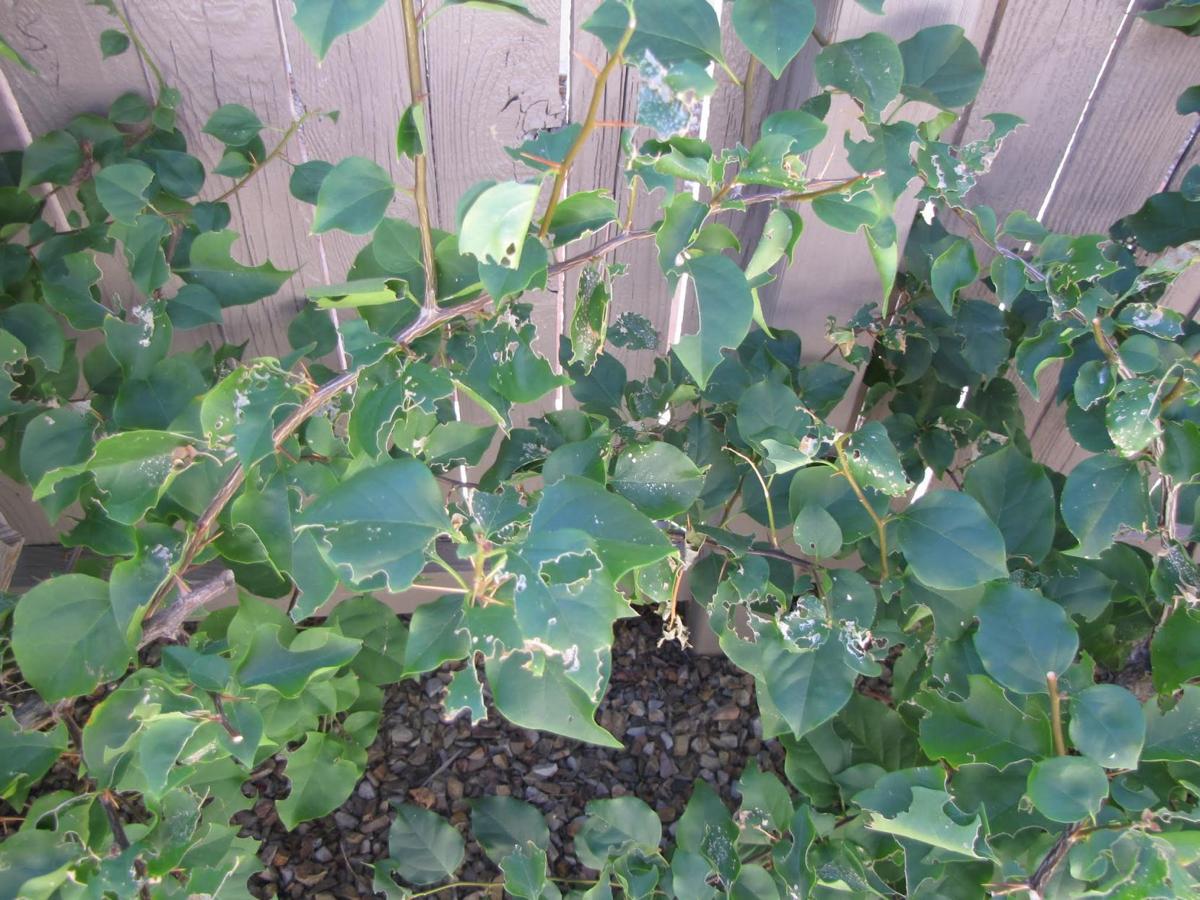Q: We purchased our home in Tucson Estates a few years ago. As part of the landscaping, there are bougainvillea plants along a fencerow. Every summer we have battled some kind of an insect that eats the green leaves. When we begin to have the cooler temps, the insects seem to be fewer and the plants finally begin to blossom a lovely red. With our recent warm temperatures, the insects are back in abundance. I’d really like to get on top of this before next spring so that we can have healthy plants and blossoms. Is there any hope? If so, what can we do?
A: There are two known caterpillar pests of bougainvillea. Disclisioprocta stellate, aka the bougainvillea looper and the somber carpet moth, is a moth originally from Africa that is now found commonly in Hawaii and the southern United States. The adult is a small brown moth and the caterpillar is also brown and small. Loopers crawl by arching their body into a loop shape so they are easy to identify while moving. Asciodes gordialis, aka the bougainvillea caterpillar moth, is also a small brown or tan moth found in the southern states. The caterpillar is green and doesn’t loop while crawling. Both of these insects will disappear in the cool part of the year and resume activity in the warm times. Identifying them would be useful and probably fun for me so I would like to know when they begin feeding again in the spring if you don’t mind. To manage them, you will use the same strategy. You can look for caterpillars now and whenever you start to see new damage and pick them off the leaves. They are helpless off the plants. You can also spray the leaves with Bacillus thuringiensis (Bt) labeled for caterpillar pests to kill the ones you overlooked. Looking more often when you notice new damage will help. There will be periods of time when they are less active when a quick weekly examination will suffice. The insect in the photo you sent is a green lacewing and is a beneficial insect that might help with your pest management. For this reason, the Bt is a good choice because it will harm only caterpillars.
Peter L. Warren is the urban horticulture agent for the Pima County Cooperative Extension and the University of Arizona. Email questions and photos to tucsongardensage@gmail.com





